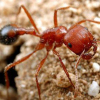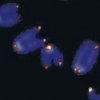- Formiculture.com
- Forums
- Gallery
- Members
- Member Map
- Chat

Pupa vs Coccoon
Started By
Mihai274
, Jul 25 2020 10:37 AM
7 replies to this topic
#1
 Offline
-
Posted July 25 2020 - 10:37 AM
Offline
-
Posted July 25 2020 - 10:37 AM
Hey. I read that some ants life cycle is like this:egg-larva-pupa-worker and other ants life cycle is like:egg-larva-coccoon-worker.What is the difference between pupa an Coccoon?
Trimis de pe al meu SM-A505FN folosind Tapatalk
Trimis de pe al meu SM-A505FN folosind Tapatalk
#2
 Offline
-
Posted July 25 2020 - 10:43 AM
Offline
-
Posted July 25 2020 - 10:43 AM
Some ants eclose in a cocoon and some do not. They are both forms of the larvae stage. Those that close without a cocoon are visible to watch and admire. You can watch them form their exoskeleton and in the last few days they get most of their colors
Sent from my iPhone using Tapatalk
Sent from my iPhone using Tapatalk
#3
 Offline
-
Posted July 25 2020 - 10:43 AM
Offline
-
Posted July 25 2020 - 10:43 AM
Some ant species spin cocoons and some don’t.Hey. I read that some ants life cycle is like this:egg-larva-pupa-worker and other ants life cycle is like:egg-larva-coccoon-worker.What is the difference between pupa an Coccoon?
Trimis de pe al meu SM-A505FN folosind Tapatalk
Inside of a cocoon is a pupae, then when the pupae wakes up it brakes out of the cocoon, becoming an ant.
When the species doesn’t spin cocoons they just wake up without having to break out of their cocoons. There is a better way to say this but I’m not sure how
- BADANT likes this
Currently Keeping:
Pogonomyrmex Californicus Bicolor & Concolor
Pogonomyrmex Subnitidius
Camponotus Sansabeanus
#4
 Offline
-
Posted July 25 2020 - 10:50 AM
Offline
-
Posted July 25 2020 - 10:50 AM
I understand now thx
Trimis de pe al meu SM-A505FN folosind Tapatalk
Trimis de pe al meu SM-A505FN folosind Tapatalk
#5
 Offline
-
Posted July 25 2020 - 10:51 AM
Offline
-
Posted July 25 2020 - 10:51 AM
Ants species with cocoons have larvae that spin the cocoon first, and then they turn in to pupae inside of the cocoon. Although sometimes species with cocoons don't spin cocoons. Ant species with naked pupae have larvae that go directly to pupae, skipping the cocoon step.
He travels, he seeks the p a r m e s a n.
#6
 Offline
-
Posted July 28 2020 - 12:53 PM
Offline
-
Posted July 28 2020 - 12:53 PM
Wondering if weaver ant larvae whose silk isn't used up for building leaf nests will spin a cocoon? ![]()
Just wondering.
- Antkid12 likes this
Formiculture Journals::
Veromessor pergandei, andrei; Novomessor cockerelli
Camponotus fragilis; also separate journal: Camponotus sansabeanus (inactive), vicinus, laevigatus/quercicola
Liometopum occidentale; Prenolepis imparis; Myrmecocystus mexicanus (inactive)
Pogonomyrmex subnitidus and californicus (inactive)
Tetramorium sp.
Termites: Zootermopsis angusticollis
Isopods: A. gestroi, granulatum, kluugi, maculatum, vulgare; C. murina; P. hoffmannseggi, P. haasi, P. ornatus; V. parvus
Spoods: Phidippus sp.
#7
 Offline
-
Posted July 28 2020 - 2:15 PM
Offline
-
Posted July 28 2020 - 2:15 PM
Wondering if weaver ant larvae whose silk isn't used up for building leaf nests will spin a cocoon?
Just wondering.
I don't think so.
Ants I have: Tapinoma sessile(2 queen colony). RED MORPH Camponotus neacticus(now has pupae!), Tetramorium immigrans (x3), Aphaenogaster sp, Temnothorax sp, Brachymyrmex sp. possibly infertile ![]() , Ponera pennsylvanica, and Pheidole morrisi!
, Ponera pennsylvanica, and Pheidole morrisi! ![]()
Other insects: Polistes sp. Queen
Ants I need: Pheidole sp., Trachymyrmex sp., Crematogaster cerasi , Dorymyrmex sp. Most wanted: Pheidole morrisii
#8
 Offline
-
Posted July 28 2020 - 3:01 PM
Offline
-
Posted July 28 2020 - 3:01 PM
Wondering if weaver ant larvae whose silk isn't used up for building leaf nests will spin a cocoon?
Just wondering.
They don't.
"God made..... all the creatures that move along the ground according to their kinds (including ants). And God saw that it was good. Genesis 1:25 NIV version
Keeping:
Formica cf. pallidefulva, cf. incerta, cf. argentea
Formica cf. aserva, cf. subintegra
Myrmica sp.
Lasius neoniger, brevicornis
1 user(s) are reading this topic
0 members, 1 guests, 0 anonymous users



















